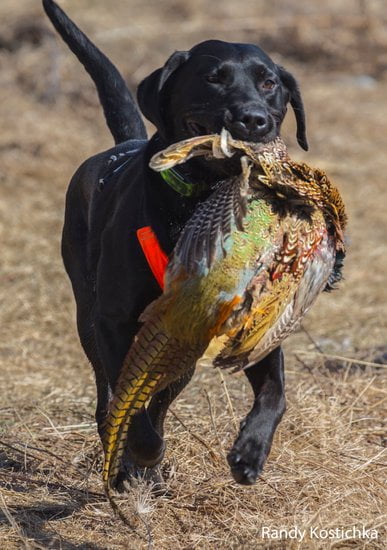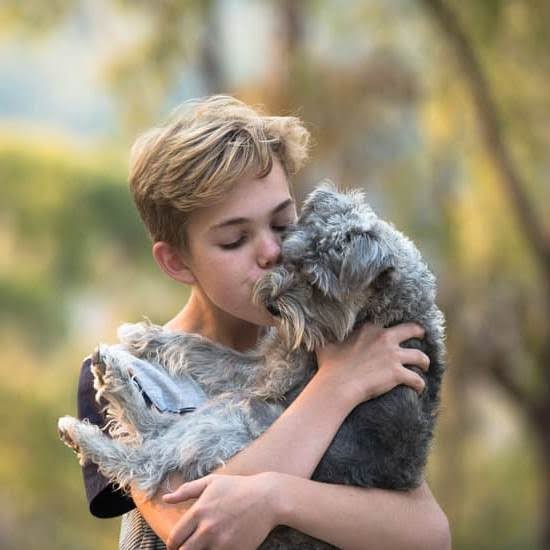Are you struggling to effectively train your dog using traditional command methods? Have you considered using a silent whistle to aid in your dog’s training? If not, then this article is for you.
Today, we will explore the world of silent whistle training and how it can be a game-changer in teaching your furry friend obedience and tricks. We will delve into understanding the use of a silent whistle for dog training, choosing the right one for your dog, the basics of using the silent whistle for commands, step-by-step training guide, common mistakes to avoid, tips for successful training, advanced techniques, and troubleshooting common issues.
Silent whistle training is gaining popularity among dog owners who are looking for more effective ways to communicate with their pets. The silent whistle emits an ultrasonic sound that humans cannot hear but is easily picked up by dogs. This makes it an ideal tool for long-distance communication or for situations where a loud verbal command might be inappropriate. In this section, we will discuss the fundamentals of using a silent whistle and its advantages over traditional training methods.
Before jumping into training with a silent whistle, it is crucial to choose the right one for your dog. Not all silent whistles are created equal, and different models have varying frequencies and ranges.
In the next section, we will explore how to select the best silent whistle based on your dog’s breed and specific needs. By understanding the different features of these whistles, you can ensure that you are making a suitable choice that will enhance your dog’s learning experience.
Understanding the Use of Silent Whistle for Dog Training
When it comes to training your dog, using a silent whistle can be a highly effective method. But before diving into the specifics of how to train your dog with a silent whistle, it’s important to understand the purpose and use of this tool.
The silent whistle operates at a frequency that is too high for humans to hear, but dogs are able to pick up on it. This makes it an excellent tool for training, especially when you need to give commands over long distances or in noisy environments. The use of a silent whistle also eliminates the need for verbal commands, which can be confusing for some dogs.
To start using a silent whistle for dog training, you’ll first need to introduce your pup to the sound. This can be done by pairing the whistle with something positive, such as treats or playtime. Once your dog associates the sound of the whistle with something enjoyable, you can begin using it to teach commands and behaviors.
Once you understand the purpose and effectiveness of using a silent whistle for dog training, you can move on to choosing the right one for your pup and learning how to effectively use it in your training sessions. Keep in mind that consistency and patience are key when incorporating this tool into your dog’s training routine.
Choosing the Right Silent Whistle for Your Dog
When it comes to training your dog with a silent whistle, choosing the right one is essential for successful training. There are several factors to consider when selecting a silent whistle for your dog, including the material, frequency range, and adjustable settings.
Material and Durability
One of the first things to consider when choosing a silent whistle for your dog is the material it is made of. Look for a durable and high-quality material that can withstand outdoor elements and frequent use. Metal or heavy-duty plastic whistles are often the best options for durability.
Frequency Range
Another important factor to consider is the frequency range of the silent whistle. Different whistles have varying frequency ranges, and it’s essential to choose one that suits your dog’s hearing abilities. It’s recommended to select a whistle with an adjustable frequency range so you can customize it based on your dog’s preferences.
Adjustable Settings
Having an adjustable silent whistle allows you to fine-tune the sound based on your dog’s response. This feature gives you more control over the training process and ensures that you can find the most effective sound for your specific dog.
By considering these factors, you can choose a silent whistle that is most suitable for your dog’s training needs and set yourself up for successful training sessions using this unique tool.
The Basics of Using the Silent Whistle for Commands
Many dog owners are turning to silent whistle training as an effective way to communicate with their furry friends. Unlike traditional whistles, silent whistles produce a sound that is inaudible to the human ear but can be heard by dogs. This makes it a great tool for long-distance commands and training in noisy environments. In this section, we will delve into the basics of using a silent whistle for commands and how it can benefit your dog training routine.
Understanding the Function of a Silent Whistle
Silent whistles, also known as Galton’s whistle, work by producing ultrasonic sound waves at frequencies that are high enough to be detected by dogs but beyond the range of human hearing. The sound emitted from a silent whistle is consistent and not affected by external factors such as wind or distance, making it a reliable tool for training commands.
Introducing Your Dog to the Silent Whistle
Before incorporating the silent whistle into your dog training regimen, it’s essential to introduce your dog to the sound gradually. Start by using the silent whistle in short training sessions alongside verbal cues and rewards. Over time, your dog will associate the sound of the whistle with specific commands and actions.
Using the Silent Whistle for Basic Commands
Once your dog is familiar with the sound of the silent whistle, you can begin using it for basic commands such as recall, sit, stay, and stop. Remember to use consistent hand signals or verbal cues along with the whistle to help your dog understand what is expected of them. With patience and practice, your dog will learn to respond to these commands even from a distance or amidst distractions.
In this section, we have covered the foundational aspects of utilizing a silent whistle for commanding your dog during training sessions. Understanding its function and properly introducing it to your pet are crucial steps in effectively incorporating this tool into your training routine. In the following sections, we will explore step-by-step guides on how to train your dog using a silent whistle and provide tips for successful training outcomes.
Step-by-Step Guide on Training Your Dog Using the Silent Whistle
So, you have decided to train your dog using a silent whistle. This can be an effective and versatile tool for communicating with your furry friend at a distance. Here is a step-by-step guide on how to train your dog using the silent whistle:
1. Choose the Right Silent Whistle: Before you start training, it’s important to choose the right silent whistle for your dog. There are different types of silent whistles available, so make sure to select one that is suitable for your dog’s size and breed.
2. Introduce the Silent Whistle: Start by getting your dog comfortable with the sound of the silent whistle. Begin in a quiet environment and blow the whistle while giving your dog a treat or praise. Repeat this process several times until your dog associates the sound of the whistle with something positive.
3. Associate Commands with Whistle Blows: Once your dog is familiar with the sound of the whistle, you can start associating specific commands with certain whistle blows. For example, one short blast could mean “come,” while two short blasts could mean “sit.” Be consistent with your commands and whistle blows during training sessions.
4. Practice and Reinforcement: Practice using the silent whistle in various situations and environments to reinforce your dog’s understanding of the commands associated with each whistle blow. Use treats, praise, and positive reinforcement to encourage desired behaviors.
5. Correcting Behavior: If your dog does not respond to a command given through the silent whistle, avoid repeating the command or blowing the whistle multiple times in quick succession. Instead, gently correct your dog’s behavior and reissue the command along with a single clear blast from the silent whistle.
Training your dog using a silent whistle requires patience, consistency, and positive reinforcement. By following this step-by-step guide, you can effectively communicate commands to your dog from a distance using this unique training tool.
Remember that every dog is different, so it may take some time for them to fully understand and respond to the silent whistle commands consistently.
Common Mistakes to Avoid When Using a Silent Whistle
Training your dog with a silent whistle can be an effective and efficient way to communicate commands, but there are common mistakes that dog owners should be aware of. Understanding these mistakes and knowing how to avoid them can make the training process smoother and more successful.
One common mistake when using a silent whistle for dog training is not properly adjusting the frequency or tone of the whistle. Each dog has different hearing capabilities, so it’s important to find the right frequency that is most effective for your specific dog. It may take some trial and error to find the perfect frequency, but once you do, it will greatly improve the communication between you and your furry friend.
Another mistake to avoid is using the silent whistle in noisy environments. The whole point of a silent whistle is its ability to communicate commands without disturbing others around you. Using it in a loud environment defeats the purpose and will only confuse your dog. Find a quiet area for training sessions where your dog can solely focus on the sound of the whistle.
Lastly, one of the biggest mistakes that dog owners make when using a silent whistle is inconsistency. Training with a silent whistle requires patience and consistency. It’s essential to use the same commands every time and reinforce positive behavior with rewards. Inconsistent use of the silent whistle will lead to confusion for your dog and hinder their progress in learning commands.
In summary, avoiding these common mistakes when using a silent whistle for dog training involves properly adjusting the frequency, finding quiet training environments, and maintaining consistency in commands. By being mindful of these potential pitfalls, you can maximize the effectiveness of this training tool and strengthen your bond with your canine companion.
| Common Mistakes | Avoidance Strategy |
|---|---|
| Improper frequency adjustment | Find right frequency through trial and error |
| Using in noisy environments | Find quiet areas for focused training |
| Inconsistency in commands | Maintain consistent use of commands |
Tips for Successful Silent Whistle Training
Training your dog with a silent whistle can be a highly effective and convenient method for communication. However, it is important to keep in mind that successful training requires patience, consistency, and the right approach. In this section, we will explore some valuable tips for achieving success in silent whistle training.
First and foremost, it is crucial to start with the basics. Before using the silent whistle for commands, make sure your dog understands its purpose and knows how to respond to the whistle. Begin by associating the sound of the whistle with positive reinforcement, such as treats or praise. This will help your dog form a positive association with the whistle and be more responsive to its signals.
Consistency is key when using a silent whistle for training. Ensure that your cues are clear and consistent, so your dog can easily understand what is expected of them. Additionally, make sure to use the same pitch and frequency when using the whistle, as varying these factors can lead to confusion for your pet.
Another important tip for successful training with a silent whistle is to practice in various environments. Start in a quiet and familiar setting before gradually introducing distractions. This will help your dog generalize their response to the whistle across different situations and environments. With consistent practice and patience, you can effectively train your dog using a silent whistle.
Advanced Training Techniques With the Silent Whistle
Once you have mastered the basics of using a silent whistle for dog training, you may want to explore advanced techniques to further improve your dog’s obedience and response to commands. Advanced training with a silent whistle involves refining your dog’s skills and introducing more complex commands and behaviors.
One advanced technique is using the silent whistle for distance control. This involves teaching your dog to respond to the whistle from a greater distance, even when they are out of sight.
To achieve this, start by reinforcing basic recall commands with the silent whistle and gradually increase the distance between you and your dog. Use positive reinforcement such as treats or praise to encourage your dog to come when they hear the whistle, regardless of how far away they may be.
Another advanced technique is incorporating multiple commands with different whistle patterns. Instead of using just one standard whistle pattern for all commands, you can assign specific patterns for different behaviors or actions. For example, one short burst could signal “sit,” while two short bursts could mean “lie down.” By teaching your dog to differentiate between these patterns, you can communicate more complex instructions effectively without uttering a word.
Lastly, advanced training with the silent whistle can involve adding distractions into training sessions. This could be anything from other animals or people in the environment to loud noises or unfamiliar surroundings. Introducing distractions helps solidify your dog’s response to the silent whistle in real-world scenarios, making their obedience more reliable in various situations.
Incorporating these advanced training techniques with the silent whistle requires patience, consistency, and dedication on your part as a dog owner. By mastering these techniques, you can take your dog’s training to the next level and enjoy improved communication and compliance from your furry companion. If you ever need help figuring out how to train a dog with a silent whistle do not hesitate contact professional pet trainers who have experience using this effective tool.
Troubleshooting Common Training Issues With the Silent Whistle
When using a silent whistle for training your dog, you may encounter some common issues that can hinder the effectiveness of your training sessions. It’s important to troubleshoot these problems in order to ensure that your dog responds well to the silent whistle commands and cues.
One common issue that many dog owners face when using a silent whistle is their dog not responding to the whistle commands. This can be frustrating and may lead you to believe that the silent whistle is not working for your dog.
However, it’s crucial to understand that dogs need time and patience to learn how to respond to the silent whistle. Sometimes, this process can take longer for certain dogs, so it’s important to remain consistent and persistent in your training efforts.
Another common issue with using a silent whistle for dog training is improper use of the whistle. If you’re not using the correct techniques or if you’re blowing the whistle too loudly or softly, your dog may not understand what you’re trying to communicate. It’s essential to learn how to properly use the silent whistle and practice different tones and frequencies to find what works best for your dog.
Additionally, some dogs may become desensitized to the sound of the silent whistle if it is overused or if they associate it with negative experiences. In such cases, it’s important to give your dog a break from the training sessions with the silent whistle and reintroduce it gradually in a positive manner.
By troubleshooting these common issues with using a silent whistle for dog training, you can ensure that your training sessions are productive and successful in teaching your dog new commands and behaviors. Remember that consistency, patience, and proper technique are key when using a silent whistle for training your furry friend.
Conclusion and Recap of Silent Whistle Training Benefits
In conclusion, training your dog with a silent whistle can be a highly effective and efficient method for communication and command reinforcement. The silent whistle allows for long-range commands and is ideal for outdoor training sessions. By using the silent whistle, you can effectively communicate with your dog without disturbing others or competing with background noise. This makes it an excellent tool for training in public places or areas with high levels of distraction.
It’s important to remember that training your dog with a silent whistle requires patience, consistency, and understanding. It may take some time for your dog to become accustomed to the sound of the whistle and associate it with specific commands. However, with dedication and practice, you will likely see great improvement in your dog’s responsiveness to the silent whistle.
In summary, the use of a silent whistle for dog training offers numerous benefits, including enhanced communication, improved focus, and better control in challenging environments. With the right techniques and approach, you can successfully train your dog using a silent whistle and build a stronger bond based on trust and understanding. Whether you are teaching basic commands or advanced techniques, the silent whistle can be an invaluable tool for any dog owner looking to improve their training methods.

Welcome to the blog! I am a professional dog trainer and have been working with dogs for many years. In this blog, I will be discussing various topics related to dog training, including tips, tricks, and advice. I hope you find this information helpful and informative. Thanks for reading!





